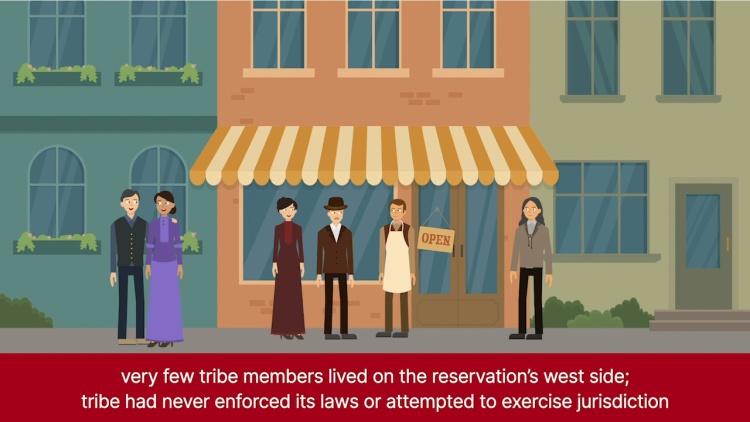Nebraska v. Parker
United States Supreme Court
136 S. Ct. 1072 (2016)
- Written by Rose VanHofwegen, JD
Facts
In 1854 and 1865, the Omaha Tribe ceded portions of its reservation to the United States for a fixed sum. In 1872, instead of another purchase, Congress authorized the secretary of the interior to sell 50,000 acres of the reservation’s west side to nontribe members, reserving the proceeds for the tribe. Only 300 acres actually sold. Another act in 1882 again authorized selling some 50,000 acres west of the railroad crossing the reservation. Tribe members chose individual allotments first, but only 10 to 15 selected parcels on the west side. Then the secretary opened the remainder of the western side to nontribe members. Various lawmakers made conflicting statements about whether the allotments would leave an ample reservation or remain within it. W.E. Peebles bought 160 acres on the west side to found Pender, Nebraska. Most Pender residents are not tribe members. Since the 1900s, less than 2 percent of the tribe lived on the west side, and the tribe did not enforce tribal laws there. That changed in 2006, when the tribe enforced a tribal liquor-licensing ordinance against Pender retailers, claiming the liquor taxes should go to the tribe, not the state. Pender liquor stores, bars, social clubs, and a bowling alley (plaintiffs) sued members of the Omaha Tribal Council (defendants), arguing Pender was no longer within the reservation or in Indian country. Nebraska and the U.S. intervened in the suit. The lower courts denied injunctive relief, reasoning that the act did not diminish the reservation absent explicit intent to do so, meaning Indian law governed Pender. The U.S. Supreme Court granted review.
Rule of Law
Issue
Holding and Reasoning (Thomas, J.)
What to do next…
Here's why 899,000 law students have relied on our case briefs:
- Written by law professors and practitioners, not other law students. 47,000 briefs, keyed to 994 casebooks. Top-notch customer support.
- The right amount of information, includes the facts, issues, rule of law, holding and reasoning, and any concurrences and dissents.
- Access in your classes, works on your mobile and tablet. Massive library of related video lessons and high quality multiple-choice questions.
- Easy to use, uniform format for every case brief. Written in plain English, not in legalese. Our briefs summarize and simplify; they don’t just repeat the court’s language.





